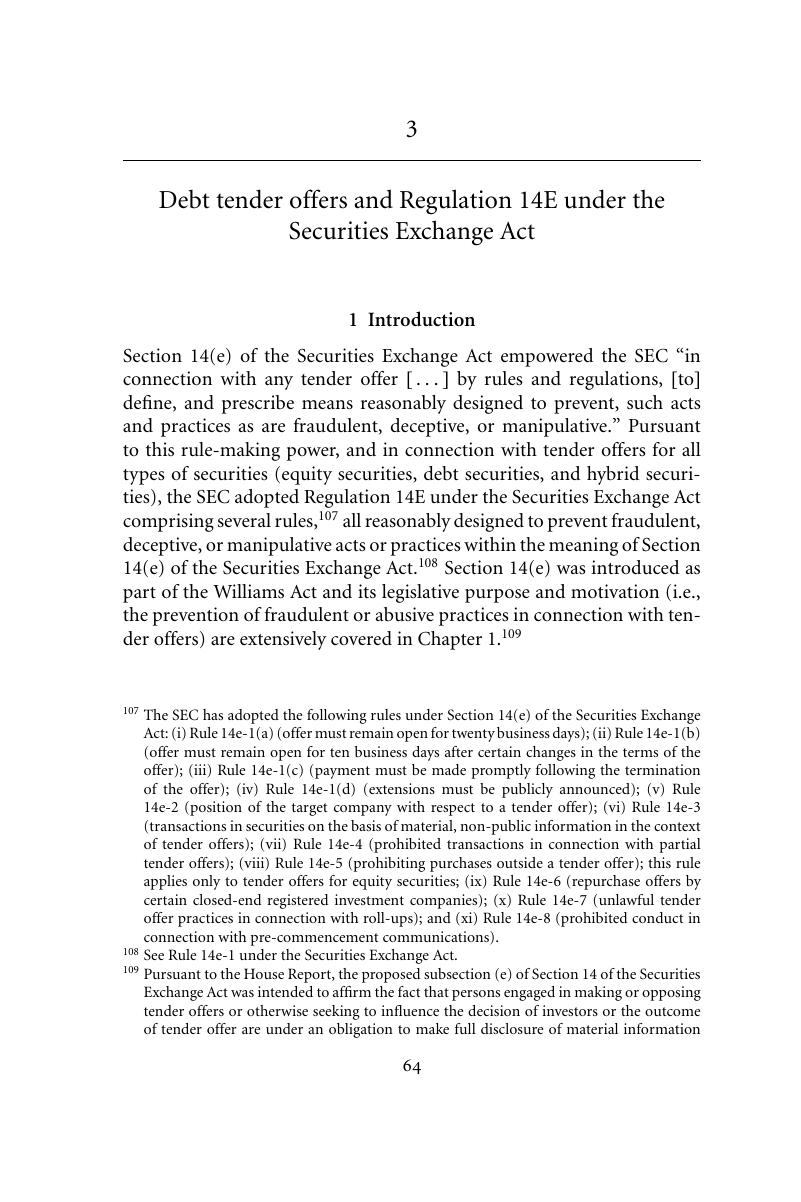Regulation 14e : What it is
Regulation 14e is an important rule in the world of finance that governs tender offers, a type of transaction where an entity or individual offers to purchase a substantial number of securities from existing shareholders of a company. In this post, we will delve into the details of Regulation 14e, exploring its purpose, guidelines, and impact on investors.
What is a Tender Offer?

A tender offer is an offer made by a prospective buyer to purchase a large number of the target company's shares directly from its shareholders. This type of transaction can be initiated by various entities, including individuals, corporations, and institutional investors. Tender offers often provide shareholders with an opportunity to sell their shares at a premium to the prevailing market price.
Understanding Regulation 14e

Regulation 14e, promulgated under the Securities Exchange Act of 1934, establishes specific requirements and guidelines that parties must follow when conducting tender offers in the United States. The regulation aims to ensure fair treatment of shareholders during the offer process, prevent fraudulent practices, and maintain transparency in securities transactions.
Impact of Regulation 14e on Investors
Regulation 14e has a significant impact on investors participating in tender offers. By providing a set of rules for the behavior of purchasers and target companies, the regulation enables shareholders to make informed decisions and protects them from potential abuse by bidders.
Some key provisions of Regulation 14e that directly affect investors include:
- Disclosure requirements: Bidders are required to disclose their identities, intentions, and financial conditions in a tender offer document filed with the Securities and Exchange Commission (SEC). This helps shareholders assess the credibility and viability of the bidder.
- Equal treatment: Regulation 14e ensures that all shareholders are treated equally during the tender offer process. Bidders must offer the same terms and prices to all shareholders within a particular class or category.
- Timely updates: The regulation mandates that bidders promptly notify shareholders of any material changes to the terms or conditions of the tender offer. This ensures that shareholders are kept informed throughout the process.
FAQs About Regulation 14e
Here are some commonly asked questions about Regulation 14e:
1. Are there any exceptions to Regulation 14e?
Yes, certain transactions are exempt from Regulation 14e. For example, offers made exclusively to employees of the target company or offers limited to a specific number of shares are not subject to the regulation.
2. How does Regulation 14e protect shareholders?
Regulation 14e ensures that shareholders receive fair treatment in tender offers by mandating equal treatment, disclosure of important information, and timely updates on any changes.
3. Can bidders withdraw a tender offer?
Yes, bidders have the right to withdraw a tender offer if certain conditions are not met, such as failing to receive the necessary regulatory approvals.
Conclusion
Regulation 14e plays a crucial role in protecting investors and maintaining transparency during tender offers. By establishing guidelines and requirements, the regulation ensures that shareholders are treated fairly and have access to relevant information. It is essential for both potential buyers and target companies to understand and adhere to Regulation 14e to facilitate a smooth and lawful transaction process.
Generation Of SRKb/SCRb Transformants And Expression Of SI In A
Langman's Medical Embryology, 14e: Chapter1: Introduction To Molecular
 Image Source : quizlet.com
Image Source : quizlet.com Approches Historiques De La Régulation Sociale (14e-20e S.) - CRHIDI
 Image Source : www.crhidi.be
Image Source : www.crhidi.be Floortime DVD Training Series. 2 Sensory Regulation And Social
 Image Source : www.ebay.com
Image Source : www.ebay.com Module 19 Exam Review - 14e - Module 19 Exam Review 1 Regulation Of
 Image Source : www.coursehero.com
Image Source : www.coursehero.com Debt Tender Offers And Regulation 14E Under The Securities Exchange Act
 Image Source : www.cambridge.org
Image Source : www.cambridge.org Tender Offer - Definition, How It Works And Regulations | Wall Street Oasis
 Image Source : www.wallstreetoasis.com
Image Source : www.wallstreetoasis.com Developmentally Stable SI In Sha[SRKb-SCRb] Transformants And Transient
![Developmentally Stable SI in Sha[SRKb-SCRb] Transformants and Transient](https://www.researchgate.net/profile/Mikhail-Nasrallah/publication/267732937/figure/fig2/AS:601653916999735@1520456880990/Developmentally-Stable-SI-in-ShaSRKb-SCRb-Transformants-and-Transient-SI-in-Col-0.png) Image Source : www.researchgate.net
Image Source : www.researchgate.net Langman's medical embryology, 14e: chapter1: introduction to molecular. Debt tender offers and regulation 14e under the securities exchange act. Generation of srkb/scrb transformants and expression of si in a. Developmentally stable si in sha[srkb-scrb] transformants and transient. Tender offer